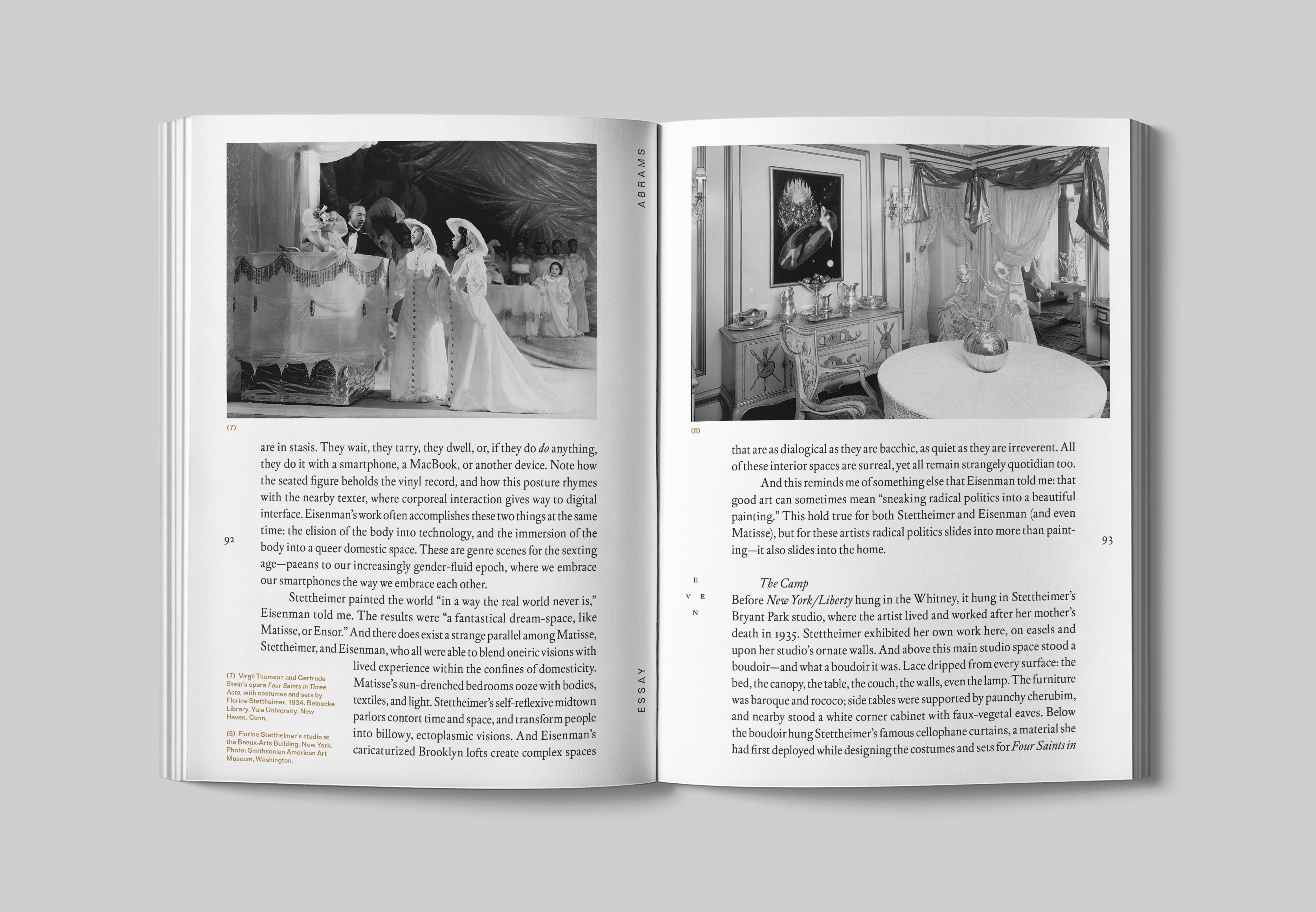The Stettheimer Set
by Matthew J. Abrams

What was it that first drew Duchamp and Warhol, and now a growing retinue of contemporary artists, to Florine Stettheimer? There are many possible answers, but we certainly can say this: a century ago Stettheimer pioneered an artistic strategy that was uniquely queer, and that dramatized, on canvas, the workings of domesticity, the importance of social networks, and the subversive power of camp. This queerness is not exactly a matter of sexual orientation — Stettheimer’s own is hard to pin down, and she and her sisters were all “voluntary spinsters,” in Ettie’s phrase — but rather of a style of living, socializing, and presenting oneself that has new applications against a new backdrop of sexual politics. The sophisticated queer aesthetic of Stettheimer’s life and work has kept her from being wholeheartedly embraced, even if she has never been truly obscure. This year, at last, she may get her due.
The full article is available in Even no. 7, published in summer 2017.